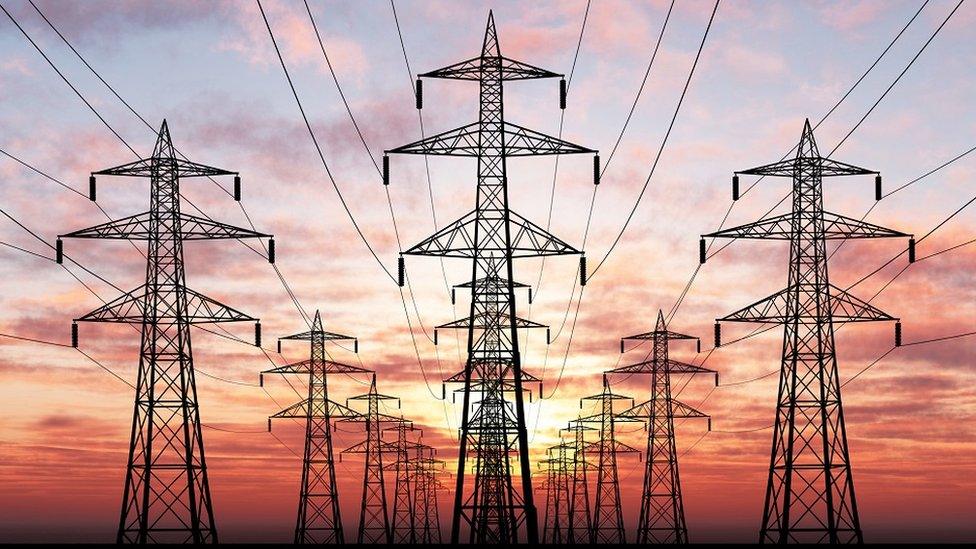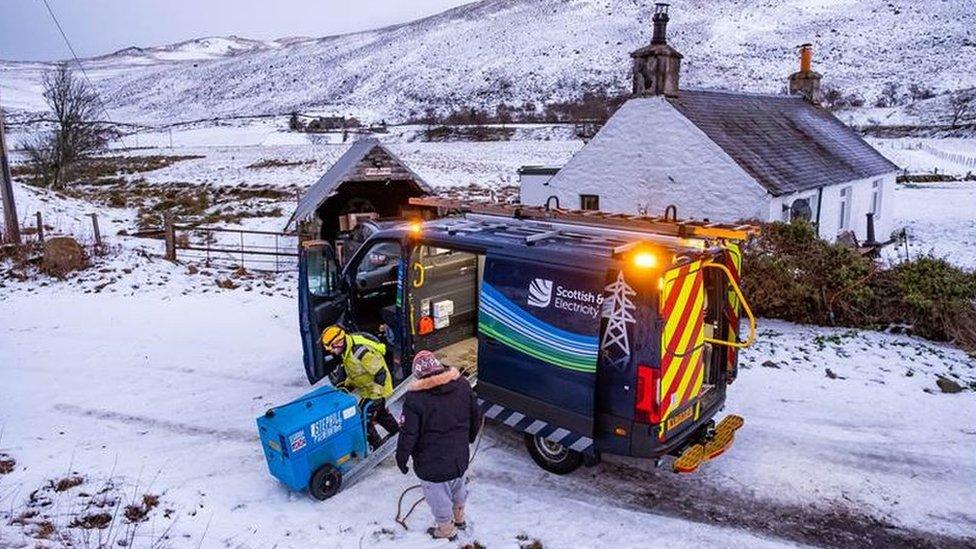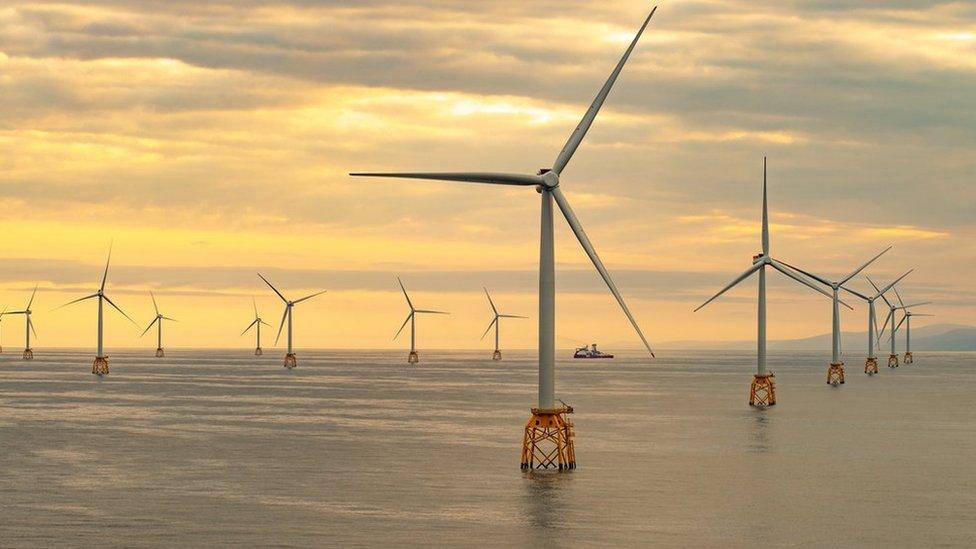Should we expect more power cuts in future?
- Published

Major grid upgrades and new subsea cables between Scotland and England are being planned, to get offshore wind power to its customers, bringing billions of pounds in investment and jobs.
It is partly a response to a worldwide problem of increasing numbers of power cuts.
A new report this week identified increasingly extreme weather, including droughts and storms, and the transition to new energy sources as twin sources of that growing problem.
North east Scotland is no stranger to tough wintry weather, but this winter has dealt some harsher blows than normal. Despite few storms, the ones that have hit - Arwen, Malik and Corrie - have knocked out power for many thousands, and over a longer time than usual.
Just bad luck? Probably not. And resilience may require more than increased tree trimming from around power lines.
Those who have faced major power cuts find themselves sharing the experience with more than 350 million people around the world during the past year - some 4% of the world's population.
That's according to a new report from the energy team at IHS Markit economic consultancy, identifying the causes as both extreme weather events and the lumpy transition to new forms of power.
Entitled "Are we entering an age of increasing power supply disruptions?", you can probably guess the answer.

A Scottish and Southern Energy engineer provides a generator during Storm Arwen
Reliable power supplies are relatively new to some countries, such as India. And countries in the sub-continent continued to face difficulties in the past year, including a nationwide blackout in Pakistan and rolling blackouts in Sri Lanka.
But the problems are occurring in countries where power had become more reliable and often taken for granted.
A winter storm that hit hard in Texas knocked out infrastructure and caused knock-on effects into other energy markets.
The report highlights the impact of low rainfall in south China and Brazil, reducing hydro-power output, and throwing them into higher dependence on coal and on gas. China had to resort to power rationing.
Where fossil fuels cannot take up the strain, because they're being curtailed by coal shutdowns and a harsher political environment for oil and gas developments, the rest of us face rationing by price, which in turn brings a knock-on effect for gas across Europe last year, when wind speeds were exceptionally low and baseload was required.
Gas was required for air conditioning and industry, meaning reserves were not replenished. They are currently reported to have fallen to the lowest level on record, below 40%, with a significant risk that hostilities on the Russia-Ukraine border could see significant supplies shut off.
The UK has hardly any gas storage anyway, and there is pressure on Qatar and even as far away as Australia to help out Europe and the UK.

Beatrice is an offshore wind farm off Scotland's Caithness coast
Back with the electricity outages, Rama Zakaria of the global power and renewables division of IHS Markit comments: "While power supply challenges are not new and power supply disruptions have long plagued certain parts of the world, new challenges are emerging and exacerbating older ones."
"Lack of maintenance and chronic under-investment in generation and grid assets in many markets around the world continues to be one of the main challenges causing power supply shortages.
"Add to that greater frequency of extreme weather events and the unsynchronized pace of energy transition and it increases the potential for a new age of more-frequent power supply disruption."
That "unsynchronised transition" is a concern close to home, in that the announcement of ever more offshore wind power being developed raises the requirements both to get it to customers and to put the cabling in place to back up renewable power when the wind drops.
The IHS Markit report said: "This is becoming increasingly the case with wind and solar resources typically located farther away from load centers.
"This in turn can lead to grid bottlenecks and supply curtailments, which can heighten the risk of power disruptions."
It is with that problem in mind that another report has been published this week. It's called Networks Option Assessment (NOA), and is part of a review started by the UK government, drawing on the main high-voltage transmission companies: SSE and Scottish Power in Scotland, and National Grid for most of the rest of Britain.

It was published after a new record was set for the share of British power coming from wind reaching 81%, in the early hours of Saturday morning - only a few days after falling below 5%, when coal generation was back in the mix at similar levels.
The report concluded some big additional projects are going to be required to link renewable energy in Scotland with markets in England, and to help out in Scotland with gas - and nuclear-generated power when the wind drops. Several of those which were proposed to previous rounds of the annual NOA but rejected have now been green-lighted.
Some are to reinforce existing lines with extra capacity around Beauly, near Inverness, and Denny, near Falkirk. The big projects are sub-sea and across the border:
two subsea links between Peterhead and the north-east of England.
further subsea capacity between Caithness and Peterhead.
two further subsea links between south-east Scotland and north-east England. One of these, coming ashore at Torness nuclear power plant, has gone from a "stop" instruction last year to "proceed" this year.
Further cabling between Torness in East Lothian and north-east England.
The report gave a green light also to continue projects already under way, saying they fit with the regulator's criteria for competition.
These link Dounreay in Caithness with Orkney, the Western Isles with Beauly, Skye and Argyll.
Significant further plans are set out in the NOA report for the whole of Britain.
Starting gun
SSE, which provides the high-voltage transmission networks across northern Scotland, warmly welcomed the report, and said it "fired the starting gun on £5bn of investment" in its area alone. With that spend comes a lot more jobs, it said.
That doesn't mean they all those projects will go ahead. There are numerous obstacles required, to prove to the regulator Ofgem that projects offer value for investment funds and that companies with monopolies are not making excessive profit, to decide the level of subsidy that can be provided, to get planning approval, and to secure the commercial funds.
And another strange condition is placed on all this. A broader, "holistic" look at the power grid requirements, as so much offshore wind is developed, is due for publication in June this year.
The authors of the report say they opted not to delay until summer because it's too important to get on with planning these projects before then.
That review could, theoretically, rip up much of what has been announced this week. But as it looks at the potential for offshore networks of seabed cabling, it looks like this huge element linking up a vast new industry will only get bigger.
